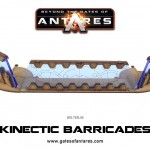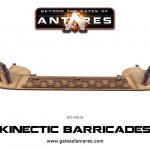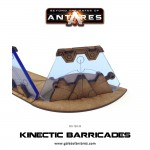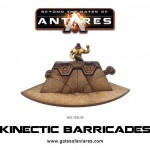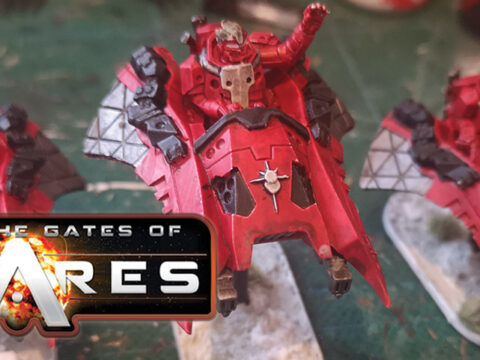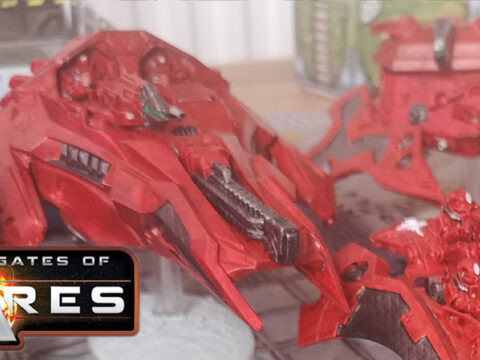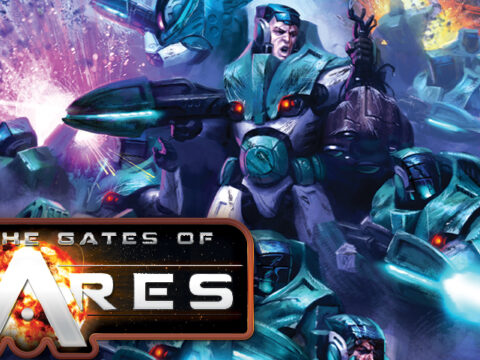Following the game’s launch just a few short weeks ago, we’ve been inundated with photos, battle reports, army lists, and excited questions from Antares players across the globe…
One of the recurring questions and discussion topics which arose was that of scenery… what does an Antarean gaming table look like? What do buildings look like?
There’s a long and a short answer… the short answer being ‘It could be anything!’
However – we’ve been working with the guys at Sarissa Precision to develop a range of official terrain for Antares, and this week we’re proud to release the first wave of products…
Kinetic Barricades
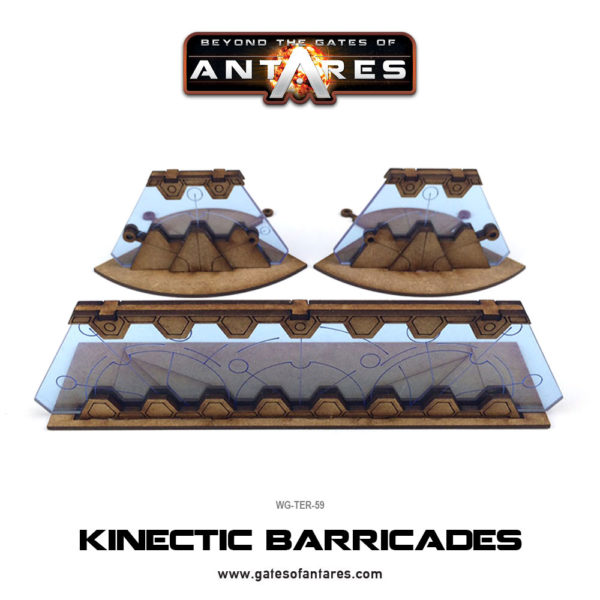
Kinetic Barriers
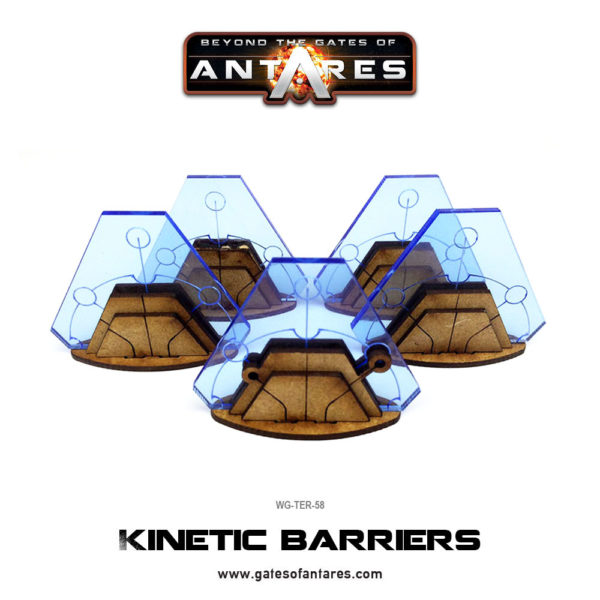
These models represent sections of kinetic barrier and kinetic barricade – types of fixed kinetic shielding used around defended positions to protect troops from enemy fire. These are the same kind of shields as are carried by Batter Drones, but the shielding is carried by a static nanite barrier and includes a substantial integral power source.
You’ll note that the barriers can be used in powered-up and powered-down modes… to represent the barrier being powered-up, and the kinetic shield being activated – you simply insert the acrylic sheet.
Kinetic Barrier & Barricade rules
These are rules we are trying out – not yet thoroughly combat ready (which is to say gamer-proofed!) and you might want to give them a go too.
Kinetic Barriers and Barricades are obstacles that provide COVER: Res +1 even when powered down.
Special Rule: When powered up, Kinetic barriers and barricades use the same rules as batter shields except that they are fixed. Any shots that pass over them from the ‘enemy’ side suffer a -2 Acc penalty.
The generator elements can be targeted by enemy shooting (LOS to any portion of the barrier) and are protected by the barrier (i.e. -2 to hit). A generator has a Res value of 12 and if it suffers damage roll on the following chart (in the same way as you would for a weapon drone, vehicle, humongous beast, etc). Remember the generator counts as heavily armoured in the usual way.
1-3 The section of barrier powers down for the rest of the current turn, but automatically reinstates itself at the end phase of the current turn.
4-6 The section of barrier powers down for the rest of the current turn. At the end phase roll a D10: 1-5 the section of barrier is destroyed, 6-10 the section of barrier is reinstated.
7-9 The section of barrier is destroyed.
10 The section is destroyed and roll a further D10 for each adjoining section: 1-5 it is also destroyed, 6-10 it is unaffected.

